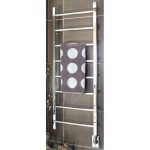Kitchen Smoke Alarm: Essential Aspects for Safety and Protection
Smoke alarms are vital safety devices that detect smoke, a common indicator of fire, and alert occupants to the presence of a fire hazard. In the kitchen, where cooking activities often generate smoke, a dedicated kitchen smoke alarm is crucial for early detection and response.
This article explores the essential aspects of kitchen smoke alarms, providing a comprehensive understanding of their importance and functionality. By considering these key factors, individuals can select and install the most appropriate smoke alarm for their kitchen, ensuring optimal safety and protection.
### Types of Kitchen Smoke AlarmsKitchen smoke alarms come in two primary types:
- Ionization Smoke Alarms: These alarms use a radioactive source to ionize the air, creating an electrical current. When smoke particles enter the alarm, they disrupt the current, triggering an alarm.
- Photoelectric Smoke Alarms: These alarms use a light sensor to detect smoke particles. When smoke enters the alarm, it scatters the light, causing the sensor to trigger an alarm.
The proper placement and installation of a kitchen smoke alarm are crucial for effective smoke detection:
- Ceiling Mount: Mount the alarm on the ceiling, at least 4 inches from any wall or light fixture.
- Center of the Kitchen: Place the alarm in the center of the kitchen, so that it can detect smoke from any direction.
- Avoid Heat and Steam: Do not place the alarm near heat sources or steam-producing appliances, as these can trigger false alarms.
Regular maintenance and testing ensure that the smoke alarm is functioning properly:
- Monthly Testing: Test the alarm once a month by pressing the test button.
- Battery Replacement: Replace the batteries every 6 months or as recommended by the manufacturer.
- Vacuum Cleaning: Regularly vacuum the alarm to remove dust and debris.
Kitchen smoke alarms have adjustable sensitivity levels:
- High Sensitivity: More likely to trigger alarms for small amounts of smoke, reducing the risk of late detection.
- Low Sensitivity: Less likely to trigger alarms for small amounts of smoke, reducing false alarms.
Some kitchen smoke alarms offer advanced features:
- Interconnected Alarms: Allows all alarms in the home to sound when one alarm is triggered.
- Voice Alarm: Provides clear voice instructions during an alarm.
- Smart Home Integration: Can be connected to smart home devices for remote monitoring and notifications.
By understanding the essential aspects of kitchen smoke alarms, individuals can make informed decisions about the type, placement, installation, maintenance, and features of their alarms. A properly functioning kitchen smoke alarm serves as a vital safety device, providing early warning of fire hazards and protecting occupants from potential harm.

Smoke Alarms While Cooking

How To Stop Annoying Smoke Detector False Alarms Apartment Therapy

Vivint Smoke Alarm And Detector

How To Peacefully Cook Without Triggering Your Smoke Alarm

Here S How Much Space You Should Leave Between Your Kitchen Smoke Alarm And Appliances

Smoke Detector Too Close To The Kitchen

Don T Skimp On Smoke Detector Placement Save Home Heat

Smoke Detector Alarm Stop Hold Devices Integrations Smartthings Community

Long Life Kitchen Smoke Alarm Co Quell

Worry Free Kitchen Sealed Battery Power Smoke Co Alarm P3010k Kidde








